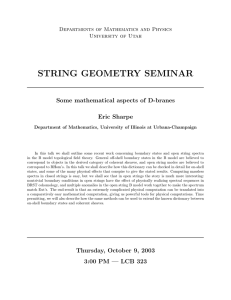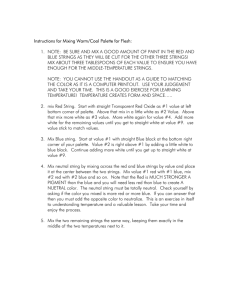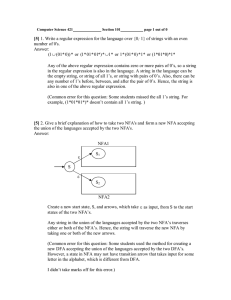COT4420 Theory of Computation February 4, 2016
advertisement
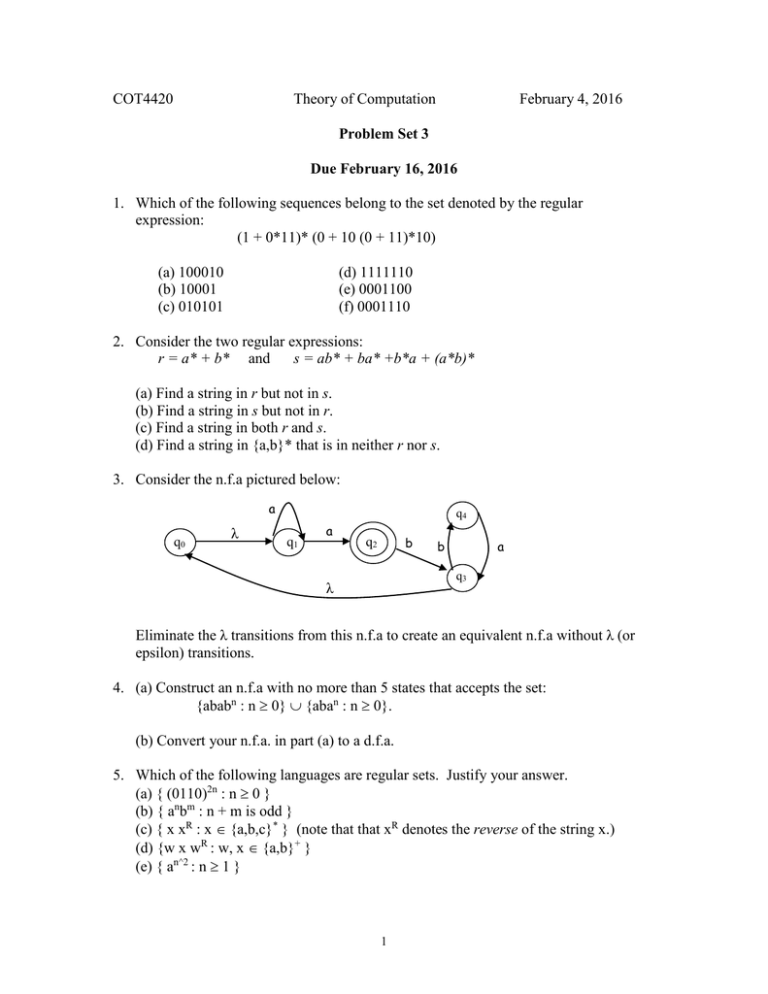
COT4420
Theory of Computation
February 4, 2016
Problem Set 3
Due February 16, 2016
1. Which of the following sequences belong to the set denoted by the regular
expression:
(1 + 0*11)* (0 + 10 (0 + 11)*10)
(a) 100010
(b) 10001
(c) 010101
(d) 1111110
(e) 0001100
(f) 0001110
2. Consider the two regular expressions:
r = a* + b* and
s = ab* + ba* +b*a + (a*b)*
(a) Find a string in r but not in s.
(b) Find a string in s but not in r.
(c) Find a string in both r and s.
(d) Find a string in {a,b}* that is in neither r nor s.
3. Consider the n.f.a pictured below:
a
q0
λ
q4
q1
a
b
q2
b
a
q3
λ
Eliminate the λ transitions from this n.f.a to create an equivalent n.f.a without λ (or
epsilon) transitions.
4. (a) Construct an n.f.a with no more than 5 states that accepts the set:
{ababn : n ≥ 0} ∪ {aban : n ≥ 0}.
(b) Convert your n.f.a. in part (a) to a d.f.a.
5. Which of the following languages are regular sets. Justify your answer.
(a) { (0110)2n : n ≥ 0 }
(b) { anbm : n + m is odd }
(c) { x xR : x ∈ {a,b,c}* } (note that that xR denotes the reverse of the string x.)
(d) {w x wR : w, x ∈ {a,b}+ }
(e) { an^2 : n ≥ 1 }
1
6. Give concise word descriptions of the sets denoted by the following regular
expressions:
(a) (0+1)*010(0+1)*
(b) (0 +11)*(1 + λ)
(c) 00(11*)(00*)
(d) (11 + 111 + 11111)*
7. Construct a d.f.a. that accepts the language generated by the following regular
grammar: G = ({S , A, B}, {a, b}, P, S ) with P:
S -> bA | aB | λ
A -> abS | aaS
B -> baS |bbS
8. Consider the following n.f.a. Find an equivalent regular grammar. The start state is
q0.
b
q1
q0
a
b
b
a
q2
a
9. Explain how every NFA can be converted into an equivalent NFA that has a
single final state. Why is this important? Give a counterexample to show that this
is not true for DFAs.
10. Using generalized transition graphs, eliminate the middle state and find the
equivalent regular expression for the acceptor below.
a
c
a
b
a
c
c
2
11. A language is said to be a palindrome language if L = LR. Find an algorithm for
determining if a given regular language is a palindrome language.
12. (a) Prove using the pumping lemma that the following languages are not regular:
i.
L = { na(w) ≠ nb(w) }
ii. L = { wcw : w ∈ {a,b}* }
iii. L = { 0m1n : 0<n≤ m}
(b) Consider the languages below. For each, make a conjecture whether or not it
is regular. Then justify your conjecture.
i.
L = { anbm : n ≤ m ≤ 2n }
ii. L = { anbm : n ≤ 25, m ≥ 50}
13. Suppose that we know that L1 ⋃ L2 is regular and that L1 is finite. Can we
conclude that L2 is regular? Explain.
14. Let L be a regular language over Σ = {a,b,c}.
(a) Show that an algorithm exists for determining if L contains any strings of even
length. (Hint: is the set of strings of even length a regular language?)
(b) Show that an algorithm exists for determining if L contains an infinite number
of even-length strings.
3
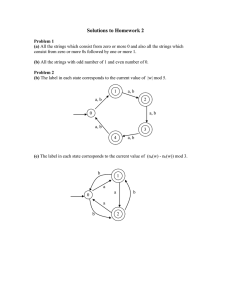

![Problem Wk.1.4.7: Palindrome [Optional]](http://s2.studylib.net/store/data/013337925_1-eef253c94fd8fc766c04f2a39f7a21c0-300x300.png)


